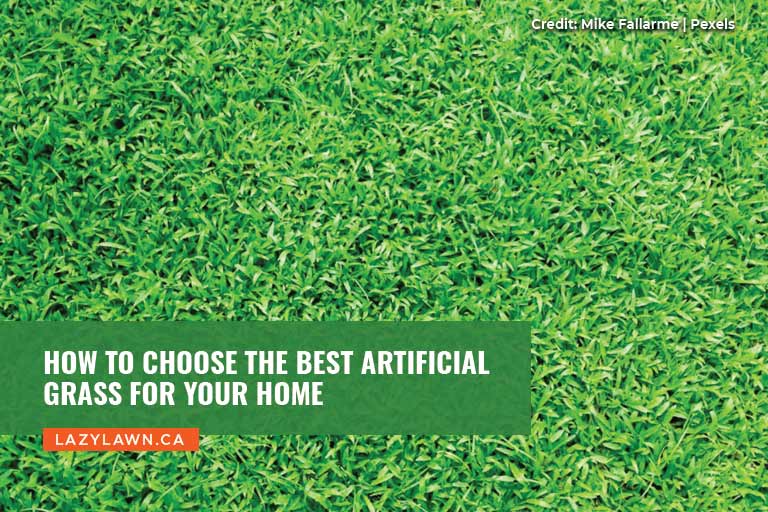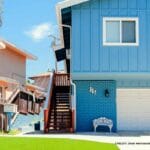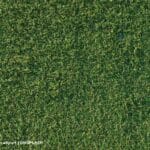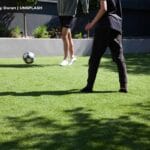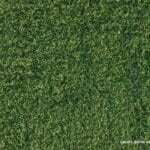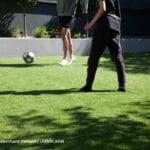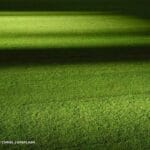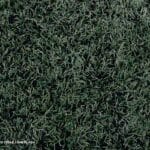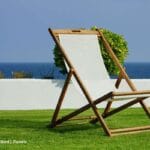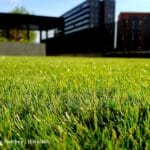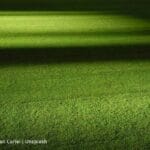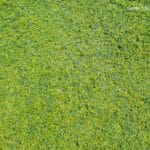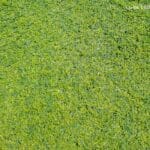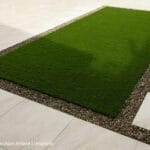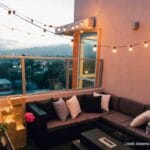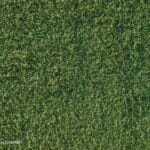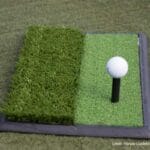Artificial grass has become an increasingly popular option for homeowners looking to maintain a lush, green lawn without the hassles of natural grass. Whether you want to create a low-maintenance garden, a pet-friendly area, or a vibrant outdoor space, artificial grass offers a solution that looks and feels realistic. However, with a variety of options available on the market, choosing the best artificial grass for your home can be a daunting task. This article will guide you through the essential factors to consider when making your selection, ensuring you find the perfect match for your needs.
1. Purpose and Usage
Before diving into the technical aspects of artificial grass, it’s important to first consider your primary purpose for installing it. Are you looking to create a play area for children, a comfortable space for pets, or simply a beautiful lawn that requires minimal upkeep? The intended use of your artificial grass will significantly influence the type and quality you should choose.
For example, if the artificial grass will be placed in a high-traffic area, such as a playground or walkway, you’ll need a product with high durability and resilience. On the other hand, if the grass is for ornamental purposes, such as a decorative garden, you might prioritise aesthetics over durability.
2. Pile Height
The pile height of artificial grass refers to the length of the individual blades of grass. This measurement is typically given in millimetres and can range from 10 mm to over 50 mm. Choosing the right pile height depends on both aesthetics and functionality.
– Short Pile (10-25 mm)
Ideal for high-traffic areas, short pile grass is durable and less likely to flatten under pressure. It’s a good choice for pathways, sports fields, and playgrounds.
– Medium Pile (25-35 mm)
Medium pile artificial grass offers a balance between durability and a natural appearance. It’s well-suited for general garden use and provides a comfortable surface for walking and playing.
– Long Pile (35-50+ mm)
Long pile grass gives a lush, luxurious appearance and is perfect for lawns intended for relaxation or visual appeal. However, it may require more maintenance, such as brushing to keep the blades upright.
3. Density and Weight
The density of artificial grass refers to the number of blades per square metre. A denser grass tends to look more natural and is usually more durable, but it can also be more expensive. The weight of artificial grass is often an indicator of its density, with heavier options typically offering a higher quality product.
– Low Density (10,000-16,000 stitches per square metre)
Suitable for decorative areas or light use, lower density grass can still provide an attractive appearance without the cost of denser options.
– Medium Density (16,000-20,000 stitches per square metre)
Offering a good balance between durability and cost, medium density is a popular choice for general garden use.
– High Density (20,000+ stitches per square metre)
High-density grass offers a premium look and feel, ideal for areas where appearance is paramount, or where the grass will experience heavy use.
4. Material and Fibre Type
Artificial grass is typically made from one of three types of synthetic fibres: polyethylene, polypropylene, or nylon. Each material has its own advantages and is suited to different applications.
– Polyethylene
This is the most common material used for artificial grass. It’s soft to the touch, UV-resistant, and durable, making it a great all-rounder for residential lawns. Polyethylene grass is also non-abrasive, making it suitable for children and pets.
– Polypropylene
Polypropylene grass is generally less expensive than polyethylene, but it is also less durable. It’s often used for decorative areas or where the grass will not be subject to heavy use. It can be a good choice if you’re on a budget but still want a decent appearance.
– Nylon
The most durable of the three, nylon grass can withstand heavy use and high temperatures without losing its shape. However, it is also the most expensive option and may feel less soft underfoot. Nylon is best for areas that will see significant wear and tear, such as sports fields or high-traffic zones.
5. Backing and Drainage
The backing of artificial grass is crucial as it provides stability and support for the synthetic fibres. A good quality backing will ensure the longevity of the grass and contribute to its overall performance. There are two main types of backing to consider:
– Latex Backing
This is the most common type of backing, offering flexibility and strength. However, latex can sometimes degrade over time, especially in areas with extreme temperature fluctuations.
– Polyurethane Backing
Polyurethane backing is more durable than latex and is often used in high-quality artificial grass. It’s also more resistant to moisture, making it a better choice for areas with high rainfall.
Proper drainage is essential to prevent water from pooling on the surface of the grass, which can lead to mould and unpleasant odours. Look for artificial grass with perforated backing that allows water to drain quickly. This is especially important if you live in an area with frequent rain or if the grass will be used by pets.
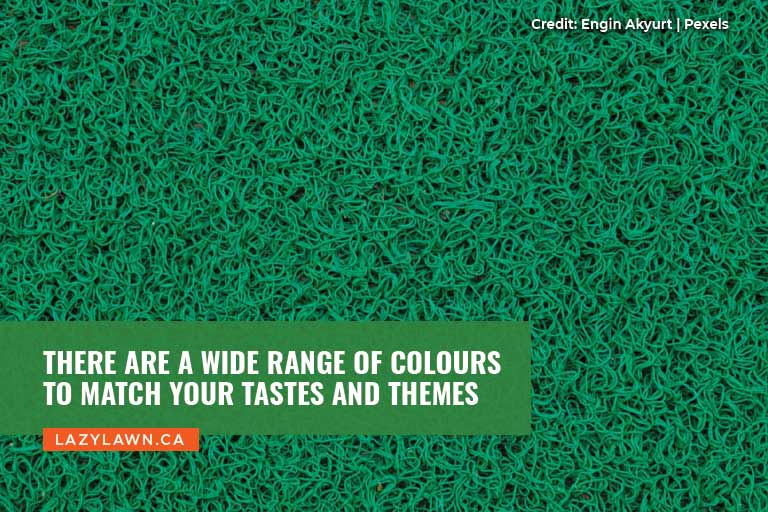
6. Colour and Aesthetics
One of the most appealing aspects of synthetic turf for homeowners in Kelowna and other areas in Canada is the ability to choose a colour that suits your landscape. Artificial grass comes in a variety of shades of green, from light and bright to dark and rich. Some products even feature a mix of colours to mimic the natural variations found in real grass.
– Single Tone
A single tone of green can provide a clean, uniform look, making it a good choice for modern gardens or minimalist landscapes.
– Two-Tone or Multi-Tone
These grasses combine different shades of green, and sometimes brown, to create a more realistic appearance. Multi-tone grass is a popular choice for residential lawns, as it closely resembles natural grass.
In addition to colour, consider the texture of the grass. Some artificial grass is designed with a more matte finish, while others have a slight sheen. The choice will depend on your personal preference and the overall look you want to achieve.
7. UV Resistance
Exposure to sunlight can cause artificial grass to fade or degrade over time. To ensure your lawn remains vibrant and durable, it’s important to choose a product with UV resistance. UV-resistant artificial grass is treated with additives that protect the fibres from the damaging effects of the sun, ensuring the grass maintains its colour and integrity for years to come.
8. Maintenance Requirements
One of the biggest advantages homeowners in Kelowna look for in artificial grass is its low maintenance requirements compared to natural grass. However, different products may require varying levels of upkeep. Some artificial grass may need occasional brushing to keep the fibres upright, especially in high-traffic areas. Others may require infill materials, such as sand or rubber granules, to maintain their shape and resilience.
When choosing artificial grass, consider how much time and effort you’re willing to invest in maintaining it. While all artificial grass will require less maintenance than natural grass, selecting a product with low maintenance requirements will save you time and effort in the long run.
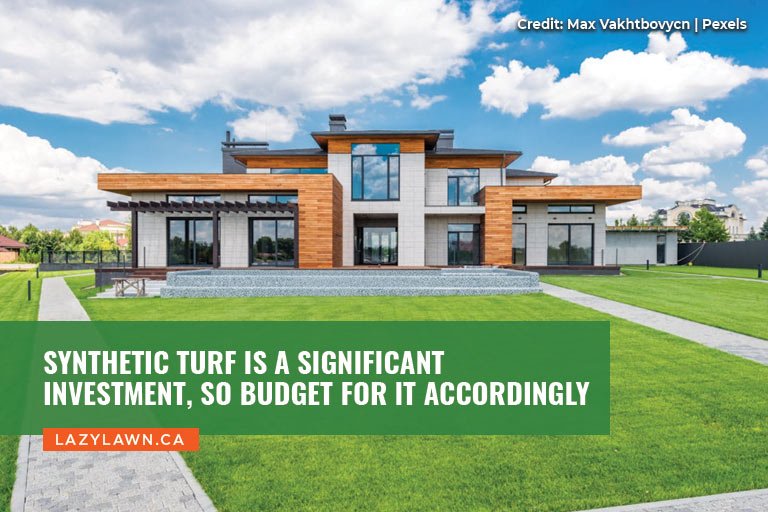
9. Budget Considerations
Finally, your budget will play a significant role in determining the type of artificial grass you choose. While it can be tempting to go for the cheapest option, it’s important to balance cost with quality. Cheaper artificial grass may save you money upfront, but it may not last as long or provide the same level of performance as a higher-quality product.
When budgeting for artificial grass, don’t forget to factor in the cost of installation. While installation of your turf can be costly, in the long run, you save more money with your synthetic turf than if you used natural grass. Professional installation can ensure your grass is laid correctly, with proper drainage and seam placement, enhancing its longevity and appearance.
Choosing the best artificial grass for your home involves carefully considering factors such as purpose, pile height, density, material, backing, colour, UV resistance, maintenance, and budget. By taking the time to evaluate these aspects, you can select an artificial grass that not only meets your functional needs but also enhances the beauty and value of your home. With the right choice, your artificial lawn can provide a lush, green space that you can enjoy year-round with minimal effort.
When it comes to affordable, high-quality synthetic turf, Lazy Lawn has you covered. We offer a wide range of artificial turf options to boost your home’s curb appeal, and help you find new and more interesting ways to use your space. Give us a call now at (888) 622-5296 to invest in synthetic turf that looks and feels like natural grass.

